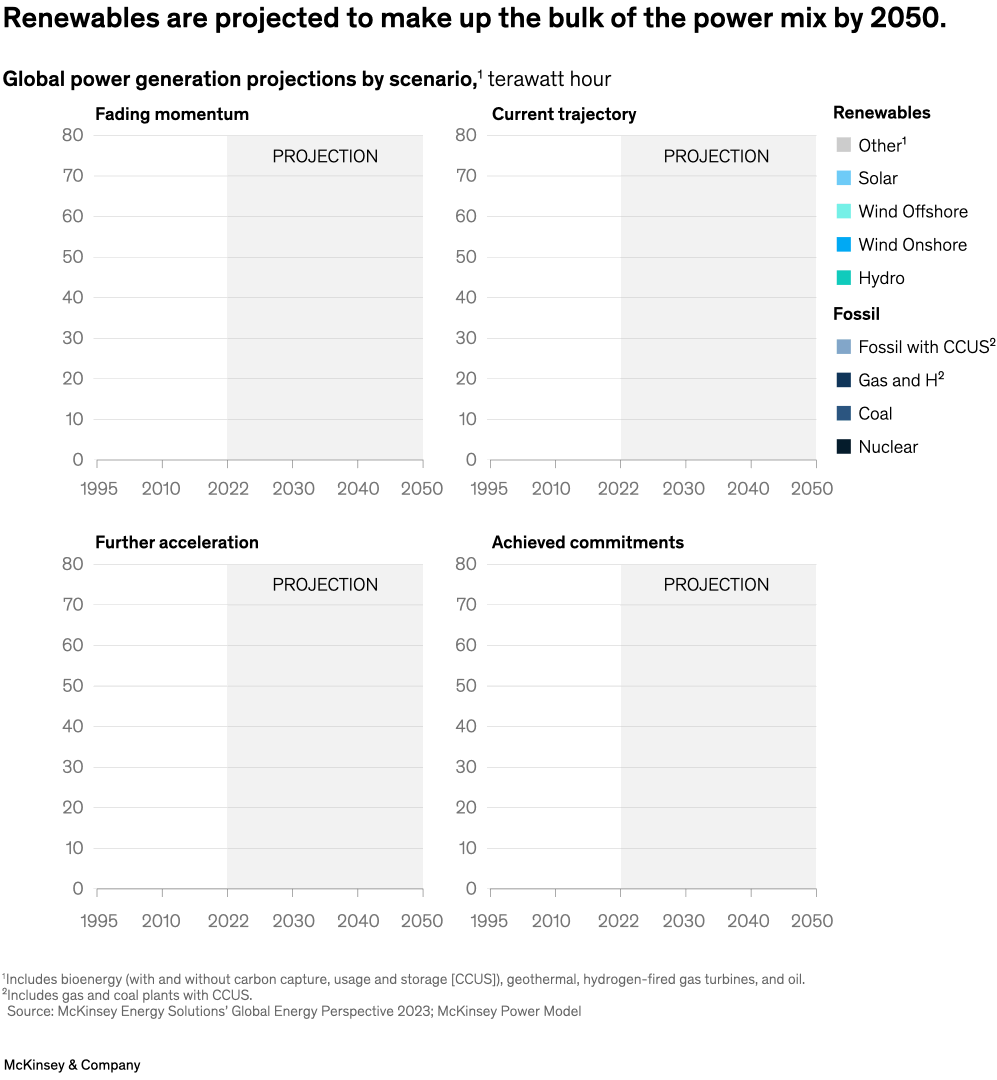Renewable energy has been growing rapidly and is becoming increasingly cost-competitive. McKinsey’s Global Energy Perspective 2023 projects that renewable-energy sources will account for between 45 and 50 percent of global generation by 2030, and between 65 and 85 percent by 2050. Solar power, followed by wind, will be the biggest contributors. However, the growth of renewables could face challenges, including supply chain issues and slow permitting.

Image description:
Four area graphs show actual and projected global power generation by scenario, renewables vs fossil fuels, in terawatt hours. The 4 scenarios are:
- Fading momentum: the total projected power generation by 2050 is ~55 terawatt hours for renewables, with fossil fuels flattening after 2022.
- Current trajectory: the total projected is ~65 terawatt hours for renewables, with fossil fuels flattening after 2022.
- Further acceleration: the total projected is ~74 terawatt hours for renewables, with fossil fuels declining after 2030.
- Achieved commitments: the total projected is ~75 terawatt hours for renewables, with fossil fuels dropping by 50% between 2030 and 2050.
Footnote 1: Includes bioenergy (with and without carbon capture, usage, and storage [CCUS]), geothermal, hydrogen-fired gas turbines, and oil. Footnote 2: Includes gas and coal plants with CCUS. Source: McKinsey Energy Solutions’ Global Energy Perspective 2023; McKinsey Power Model.
End of image description.
To read the report, see “Global Energy Perspective 2023,” October 18, 2023.